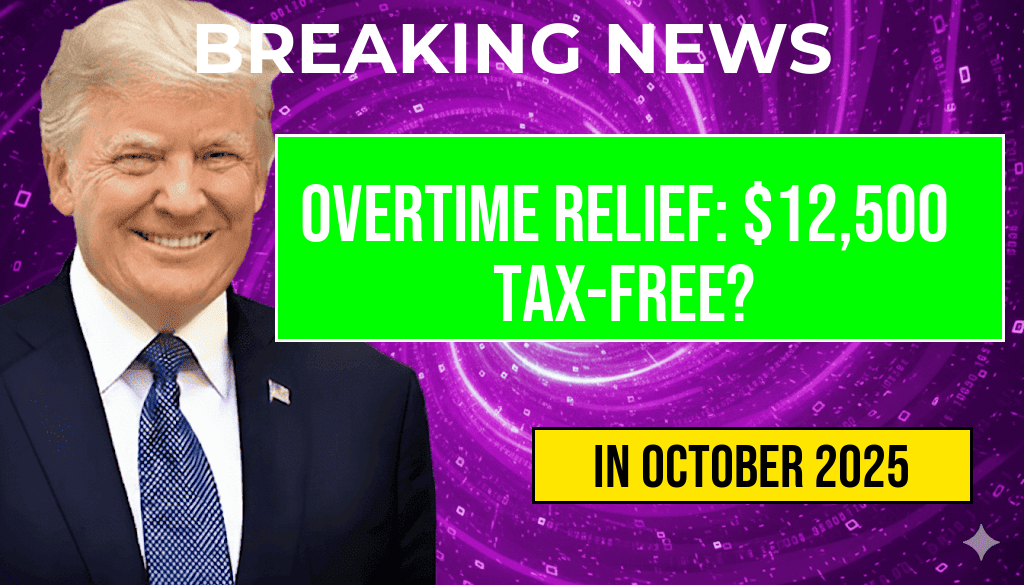New $4,000 Deduction Offers Significant Tax Relief for Low-Income Seniors
Retirees with modest incomes may soon find themselves with a more substantial tax break thanks to a recently introduced $4,000 deduction aimed specifically at low-income seniors. This adjustment, part of broader efforts to ease retirement-related financial burdens, could reduce eligible taxpayers’ annual tax bills by over $400, depending on their income and filing status. The measure, which takes effect in the upcoming tax year, is designed to provide targeted relief for seniors who often face fixed incomes and rising healthcare costs, potentially making retirement more financially manageable for thousands across the country.
For many seniors, especially those relying primarily on Social Security benefits or small pensions, navigating the tax landscape can be challenging. The new deduction offers a straightforward way to lower taxable income, which may lead to lower overall tax liabilities. While the exact impact varies based on individual circumstances, experts suggest that qualifying seniors could see a meaningful reduction in their tax obligations, freeing up resources for essentials like healthcare, prescription drugs, and daily living expenses.
Understanding the New Deduction and Its Eligibility Criteria
What Is the $4,000 Deduction?
The $4,000 deduction represents a simplified tax break targeted at low-income seniors. It is intended to be a straightforward, refundable adjustment that reduces taxable income directly, much like the standard deduction but with specific eligibility criteria tailored for seniors facing financial hardship. Unlike some tax benefits that phase out at higher income levels, this deduction is designed to assist those who need it most, providing a direct line of relief in their tax calculations.
Who Qualifies for the Deduction?
- Seniors aged 65 and older with an annual income below a certain threshold, primarily derived from Social Security, pensions, or other fixed-income sources.
- Individuals filing as single, head of household, or married filing jointly, with income limits adjusted for filing status.
- Taxpayers who do not itemize deductions, as the $4,000 deduction effectively acts as a substitute for itemized expenses that might otherwise reduce taxable income.
Officials note that precise income thresholds and eligibility details are still being finalized but will be published in upcoming IRS guidance. The deduction aims to complement existing provisions like the standard deduction and the senior exemption, providing an additional layer of support for those most in need.
Potential Impact on Tax Bills and Financial Stability
Estimated Savings for Eligible Seniors
| Filing Status | Approximate Income Range | Estimated Tax Reduction |
|---|---|---|
| Single | $15,000 – $25,000 | Over $400 |
| Married Filing Jointly | $20,000 – $35,000 | Up to $500 |
| Head of Household | $18,000 – $28,000 | Approximately $450 |
By reducing taxable income, this deduction can translate into tangible savings, especially for those at the lower end of the income spectrum. For instance, a single senior earning $20,000 annually could see their federal tax bill cut by over $400, assuming other deductions are in place.
Implications for Retirement Planning
Financial advisors suggest that this new tax benefit could influence retirement planning strategies, encouraging seniors to consider how income sources and filing choices impact their tax liabilities. The deduction provides an extra incentive for seniors to remain informed about available tax credits and deductions, potentially leading to more proactive financial management during retirement years.
Broader Context and Future Outlook
How This Fits Within Broader Tax Relief Efforts
The introduction of the $4,000 deduction aligns with ongoing efforts to make the tax code more accommodating for seniors on fixed incomes. It complements existing measures such as the Senior Tax Credit and the increased standard deduction for seniors, providing a more comprehensive safety net.
Next Steps and Resources
Taxpayers interested in qualifying for this deduction should stay tuned for IRS updates, which will clarify exact income limits and application procedures. Consulting with a tax professional can help determine eligibility and maximize potential savings. For additional information on retirement-related tax benefits, visit the IRS website or trusted financial planning resources like Forbes or Investopedia.
As the new deduction rolls out, it promises to ease some of the financial stress faced by millions of older Americans, offering a clearer path to maintaining financial stability in retirement.
Frequently Asked Questions
What is the new $4,000 deduction for low-income seniors?
The new $4,000 deduction is a tax benefit designed to help low-income retirees reduce their taxable income, potentially lowering their tax bills by over $400.
Who qualifies for the $4,000 deduction?
This deduction is available to low-income seniors who meet specific income and age requirements, ensuring that eligible retirees can access the financial relief.
How can the deduction impact my overall tax bill?
By claiming the $4,000 deduction, eligible seniors can potentially reduce their taxable income significantly, which may result in a tax savings of over $400.
Are there any additional benefits or credits available for seniors?
Yes, in addition to the new deduction, seniors may qualify for other tax credits and benefits designed to support low-income retirees, further reducing their tax liability.
How do I claim the $4,000 deduction on my tax return?
To claim the deduction, seniors should review the specific instructions on their tax forms and ensure they meet the eligibility criteria, possibly consulting a tax professional for guidance.










